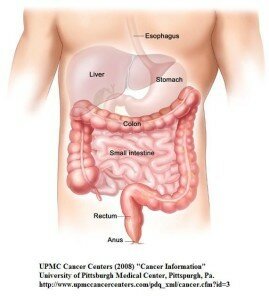
Anal fissures are small tears that occur in the skin of the anus. These tears are incredibly common. In fact, you’ve probably had at least a small one. Many heal on their own with at-home care. When they are larger, however, they can cause pain and burning, as well as bleeding during bowel movements. Between bowel movements, most patients with anal fissures report no symptoms.
What Causes Anal Fissures?
Usually caused by hard stools or straining during a bowel movement, chronic diarrhea can also lead to cracking or tearing in the skin of the anus. This tear may worsen during the next bowel movement because the searing pain often leads to spasms of the anal sphincter. This decreases blood flow to the area, impairs healing, and can actually cause the tear to expand. For some people, this becomes a never-ending cycle that requires medical attention. Some even find that they try to avoid using the bathroom in order to avoid the pain associated with an anal tear.
How Are Anal Fissures Usually Treated?
A vast majority of anal fissures heal on their own, and as many as 80 to 90 percent heal with non-invasive measures as recommended by a doctor. Some patients, however, have recurrent tears that are much more difficult to treat. Known as chronic anal fissures, only about 40 percent of these wounds heal with conservative treatments.
The go-to treatment for anal fissures is aimed at regulating the texture and frequency of bowel movements in order to allow the tear to heal on its own. A high-fiber diet and increased water intake will add bulk and soften the stool. Stool softeners may also be recommended. In order to speed healing, your doctor may also prescribe topical anesthetics to reduce pain and suggest the use of sitz baths to relax the anal sphincter muscles.
Anal fissures that do not heal with these conservative methods may be treated with medications designed to interrupt the cycle of muscle spasms and relax the anal sphincter. This often allows the skin to heal on its own without surgery. Nitroglycerin, diltiazem, and nifedipine may be prescribed for this use. They are typically applied topically. Each has its own benefits and side effects, so be sure to discuss this with your doctor if this treatment is recommended.
What Is A Sphincterotomy?
The most common surgical treatment for anal fissures is the lateral internal sphincterotomy. This is an outpatient procedure, often performed in a hospital, clinic, or surgery center. The American Society of Colon and Rectal Surgeons reports that sphincterotomies are more than 90 percent successful in the treatment of anal fissures.
This procedure is used to relax the anal sphincter, allowing healing. This effect is produced by cutting through the internal sphincter from the outermost edge of the anus, extending into the interior anal canal. While full healing may take six to ten weeks, most patients feel relief from their symptoms almost immediately. Most people return to work within a few days.
Like any surgery, there are some risks involved with a lateral internal sphincterotomy. One such risk is that the procedure may interfere with the ability to control the release of gas and stool. Although very rare, this complication can affect one’s quality of life, so it is important to discuss this risk with your surgeon.
How Is a Fissurectomy Different?
A fissurectomy is another surgery that can be used to treat anal fissures. This procedure produces the same result as a sphincterotomy, except that during this surgery, the edges of the fissure are also surgically removed, as are any skin tags that may have occurred in conjunction with chronic tears. A cauterizing tool is then used to seal the entire area of the wound. The muscle is not cut.
While a fissurectomy is a much less common procedure than the lateral sphincterotomy, there are some cases where it may be preferred. While pain gradually declines after a fissurectomy, patients who have a sphincterotomy often have an immediate reduction in pain. The incidence of recurrence is higher after a fissure excision.
What Does The Research Say About Surgery For Anal Fissures?
Lateral internal sphincterotomies are currently the procedure of choice for treating anal fissures. This is based on a number of studies that show this surgery has slight advantages over a fissurectomy procedure, according to an article published in the journal Diseases of the Colon and Rectum.
In one study that compared the outcomes of patients with sphincterotomies with those who had a fissurectomy, all patients reported no pain or bleeding one week after their surgery, and all wounds were fully healed by eight weeks. Those who had a sphincterotomy, however, had faster wound healing and a lower rate of recurrences.









